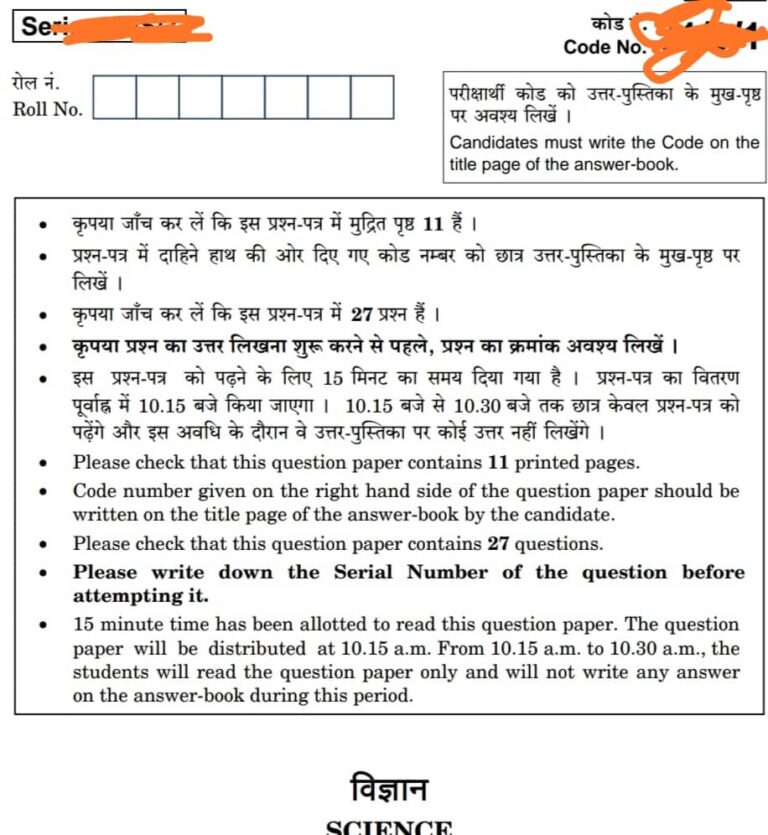Class 10th Physics Syllabus NCERT (CBSE) 2023 – 2024
The Central Board of Secondary Education (CBSE) has released the Class 10th Physics Syllabus for the academic year 2023-2024.
The syllabus is designed to help students understand the basic concepts of physics and their applications in the real world.
The syllabus covers topics such as motion, force, energy, light, sound, electricity, and magnetism.
Are you searching cbse 10th physics syllabus? Often students of class 10th are confused about how many chapters in physics are there on my science subject.
There is a total of 4 chapters of physics in the science syllabus announced by CBSE.
It is worth noting that recently the Central Board of Secondary Education has made some changes in its syllabus.
I want to draw your attention that there are a total of 16 chapters in your NCERT, out of which 4 chapters are from physics Subject. Chapter number 14 (source of energy) may also considered physics. As written below.
Must Check
| New Syllabus (Reduced) For Class 10th Science July 2024 PDF DOWNLOAD |
| Science Notes PDF Download Free |
Latest CBSE 10th Physics Syllabus
☞ Chapter 10 – Light reflection and refraction
- Reflection of light by curved surfaces; Images formed by spherical mirrors, centre of curvature, principal axis, principal focus, focal length, mirror formula (Derivation not required), magnification.
- Refraction; Laws of refraction, refractive index.
- Refraction of light by spherical lens; Image formed by spherical lenses; Lens formula (Derivation not required); Magnification. Power of a lens.
☞ Chapter 11 – Human eye and colorful world
- Functioning of a lens in human eye, defects of vision and their corrections, applications of spherical mirrors and lenses.
- Refraction of light through a prism, dispersion of light, scattering of light, applications in daily life.
☞ Chapter 12 – Electricity
- Electric current, potential difference and electric current. Ohm’s law; Resistance & Resistivity.
- Factors on which the resistance of a conductor depends.
- Series combination of resistors.
- Parallel combination of resistors and its applications in daily life.
- Heating effect of electric current and its applications in daily life.
- Electric power, Interrelation between P, V, I and R.
☞ Chapter 13 – Magnetic effect of electric current
- Magnetic effects of current : Magnetic field, field lines.
- Field due to a current carrying conductor.
- Field due to current carrying coil or solenoid.
- Force on current carrying conductor.
- Fleming’s Left Hand Rule, Electric Motor.
- Electromagnetic induction. Induced potential difference.
- Induced current.
- Fleming’s Right Hand Rule.
- Electric Generator.
- Direct current.
- Alternating current: frequency of AC.
- Advantage of AC over DC. Domestic electric circuits.
☞ Chapter 14 – Sources of energy
- Different forms of energy, conventional and non-conventional sources of energy.
- Fossil fuels, solar energy; biogas; wind, water and tidal energy; Nuclear energy.
- Renewable versus non-renewable sources of Energy.
Conclusion Points
The new Class 10th Physics Syllabus for NCERT (CBSE) 2023-2024 has been released. The syllabus includes topics such as Electricity, Magnetism, Heat, Light, and Sound. The syllabus is designed to help students understand these concepts better and prepare them for higher level studies.
You Should Must Check




